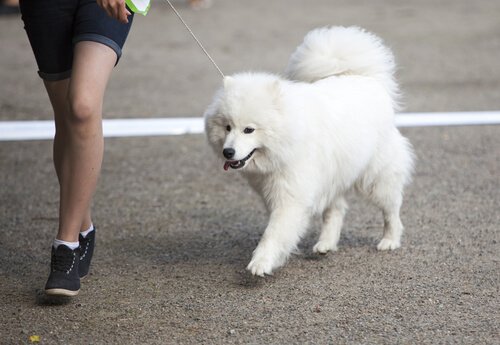Dangers to Avoid when Walking your Dog

Your dog needs a daily walk. Your dog needs to exercise, but you must still take several dangers that could arise during your walk into account. In this article, we discuss how to avoid unwanted situations while walking your dog, as well tips for helping you improve his or her behavior.
The Dangers and Importance of Walking Your Dog
Your pet goes out on walks with you every single day. You many not want it but your pet can come across various types of danger which we can help to avoid.
Dehydration
If you are going out for a run or you plan on walking your dog, you must carry a bottle of water so that you have something for your pet to drink if he or she gets thirsty. If you don’t, your dog could become fatigued as a result of dehydration, and this is a completely avoidable.
Infections
You must pay close attention to your dog’s vaccination schedule. Since you are going on daily walks, your dog is much more susceptible to viruses like distemper and parvovirus.
Canine distemper is a highly contagious disease caused by a virus that affects the respiratory and gastrointestinal tracts. Often, this can affect the nervous systems in both puppies and adults as well.
Infections in young dogs and in puppies can occur due to exposure to aerosols containing the virus. These could come from other dogs’ nasal secretions or other infected wild animals. Another contagion is contact with wild animals.
The first symptoms of distemper are usually ocular congestion and either watery discharge or pus in the eyes. In the second phase, the dog will have a fever, nasal discharge, cough, lethargy, reduced appetite, vomiting and diarrhea.
Dog Fights
If you are walking your dog near other dogs that are aggressive, you should be cautious. Carefully analyze where you are going to walk or simply walk away to avoid this danger. Think carefully about the location where you are taking your dog and keep a collar and a leash on him or her at all times. This means you avoid being other violent dogs, because you will be in control of your animal at all times.
Attacks on Others
When walking your dog, it is very important for him or her to understand that you are the leader and that when you say “sit down”, he or she will do it. If this is not the case, begin training your dog at home. He or she should associate these walks with something positive, during which meeting other dogs is not a threat, but a diversion. This needs prior training.
Noise Pollution
In order to help keep your dog from being easily frightened by street noises, it is important for him or her to have good socialization and adaptation process to urban life. If your pet has not done this, you should begin to constantly take him or her on walks so that they can get used to seeing cars, hearing noise and discovering his or her environment.
Keep in mind that it is also through socialization that your dog learns to get along with other animals, and to differentiate children from adults. On the other hand, habituation is when your dog learns to ignore environmental elements that are not dangerous. This is why a dog that is used to an urban environment does not worry about noise pollution in the city.
Walking Your Dog Through the Countryside

If you decide to walk your dog in the countryside, your main problem will be the distractions. Especially if you have a dog with a very developed sense of smell. Canine hunting breeds have a strong instinct to follow trails so you must be careful not to lose your dog, since he or she will want to run after any animal it sees.
Interacting with People
During walks in the city, it is common to cross paths with bicycles, skaters, pedestrians, etc. Your furry friend should not be scared when these things happen. Nor should the other parties be afraid of your dog. To avoid both of these situations, you must begin training your dog when he or she is a puppy, and do a good job of socializing him or her to ensure they are on their best behavior in these situations.
Another aspect that we must remember is that there are people who do not like dogs, and there are others who are afraid of them. These are respectable reasons and everyone has a right to his or her own opinion. You should not let your dog jump on others or bark at them in search of attention. It is not enough for to warn your dog not to do it—you must avoid unwanted encounters.
